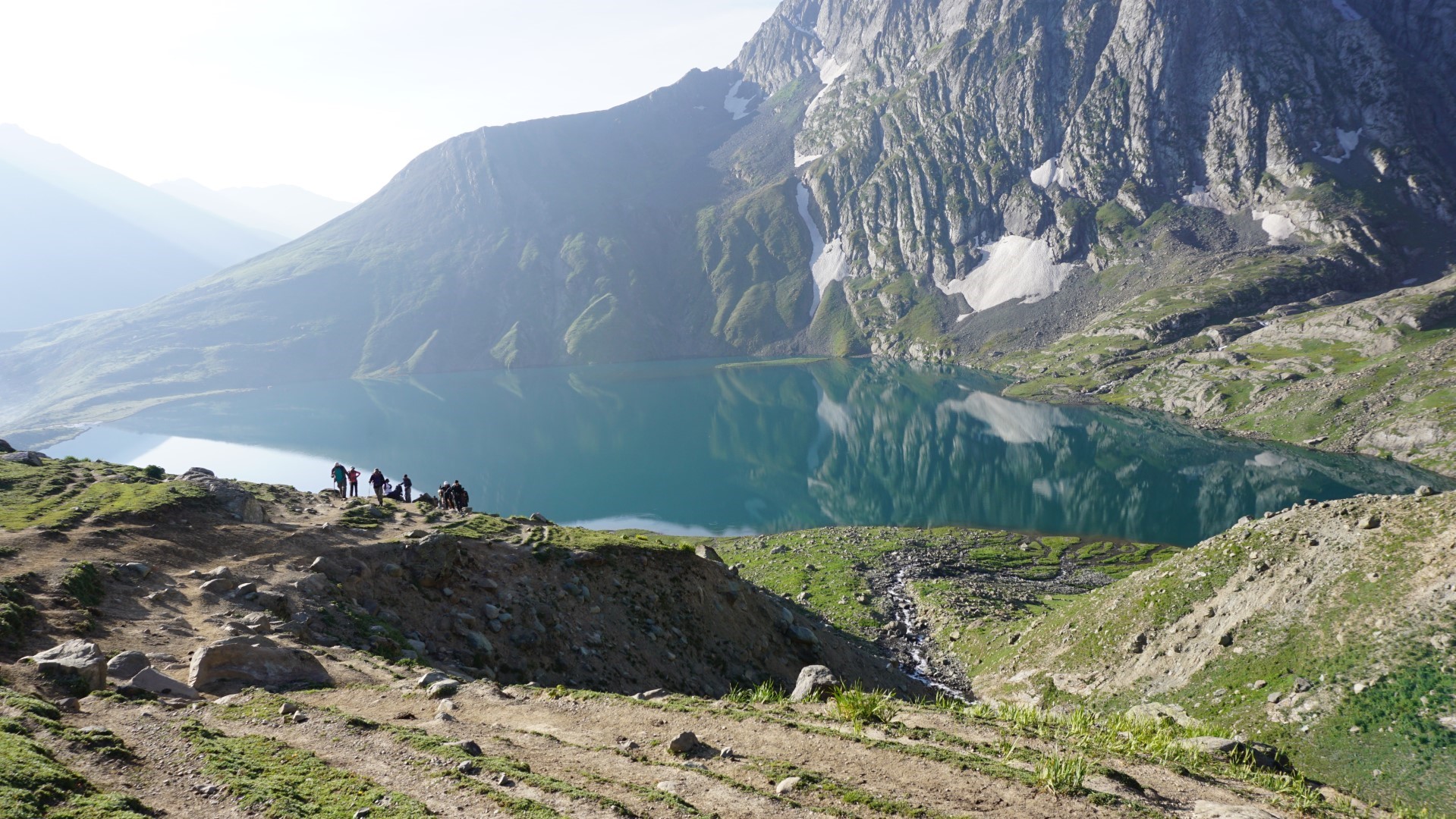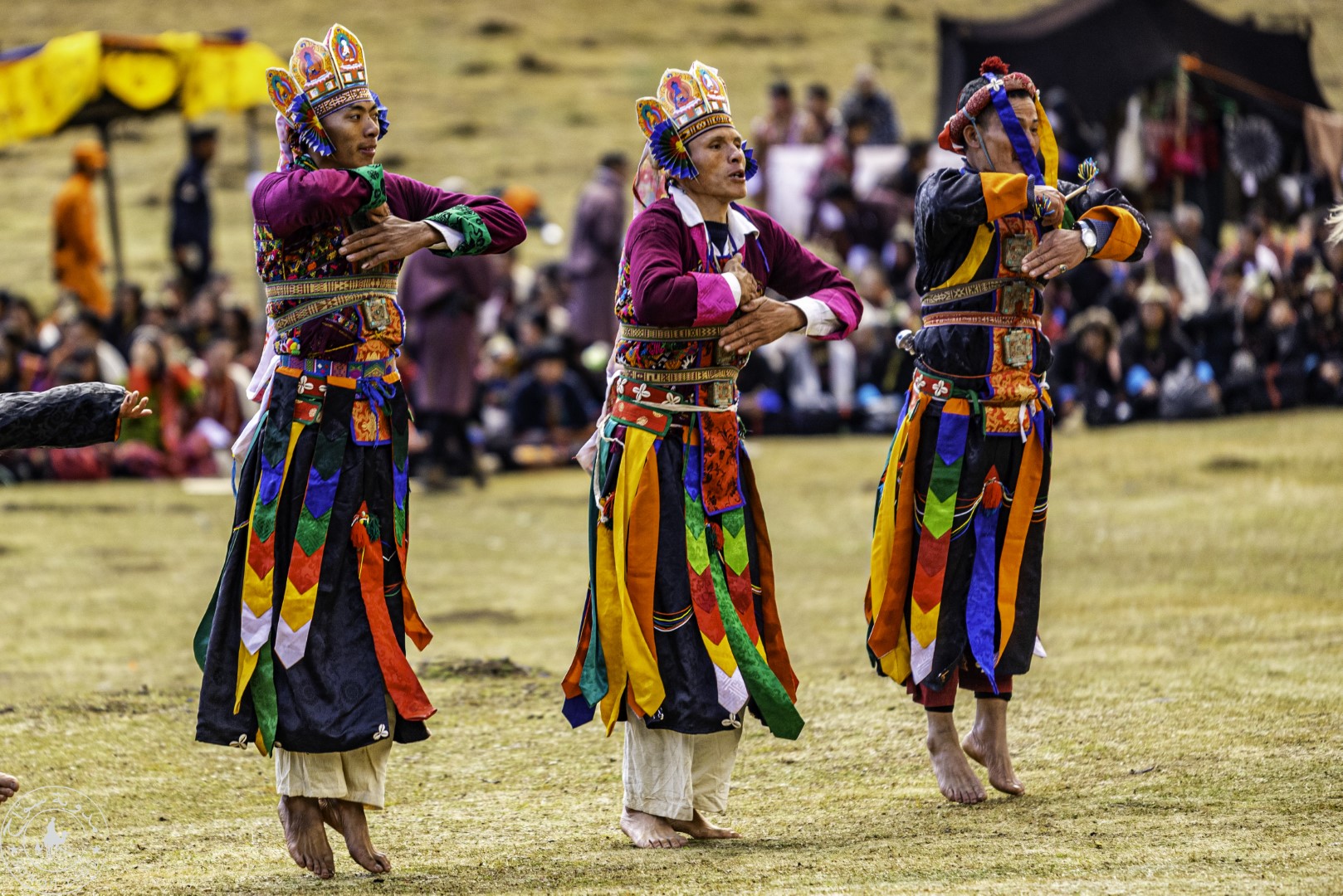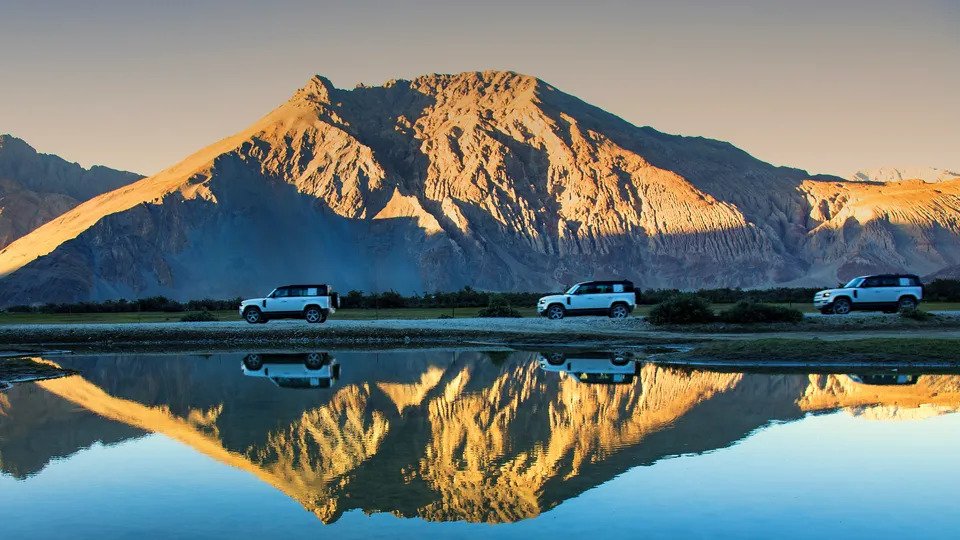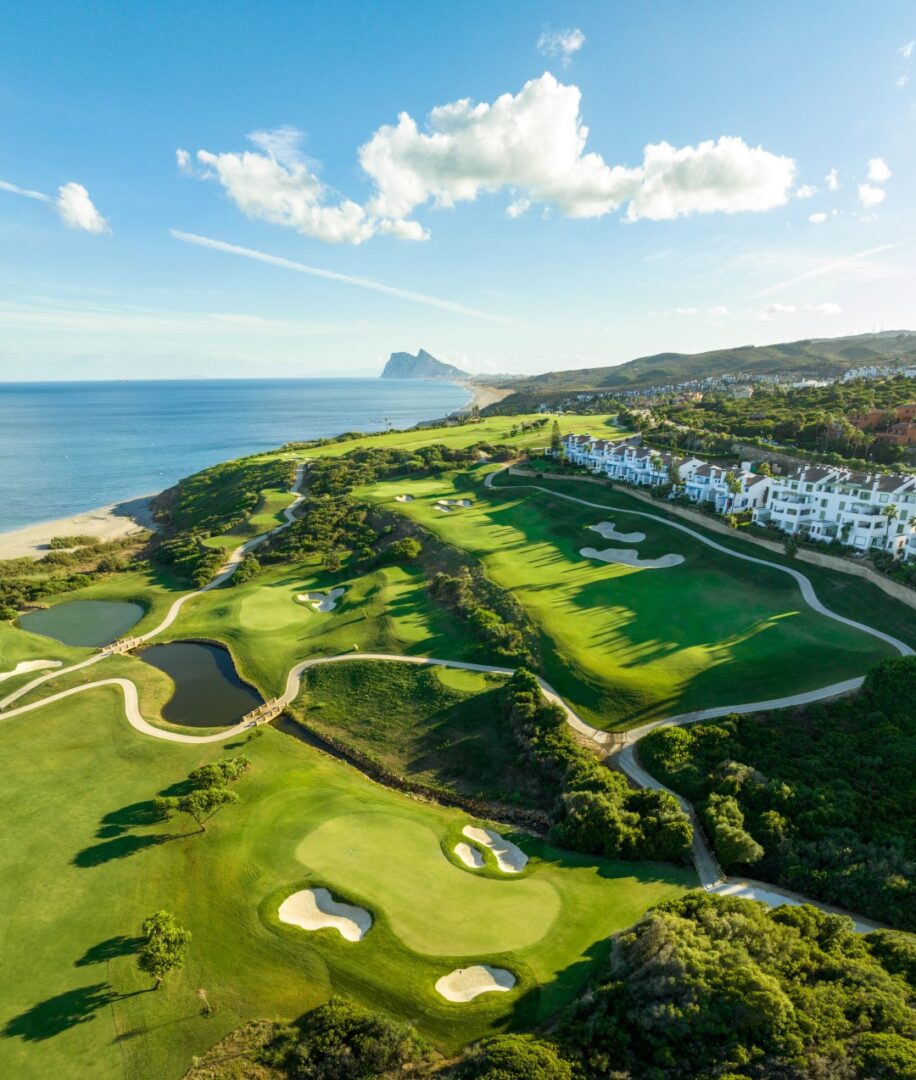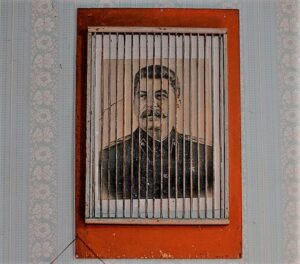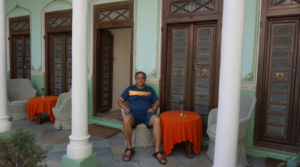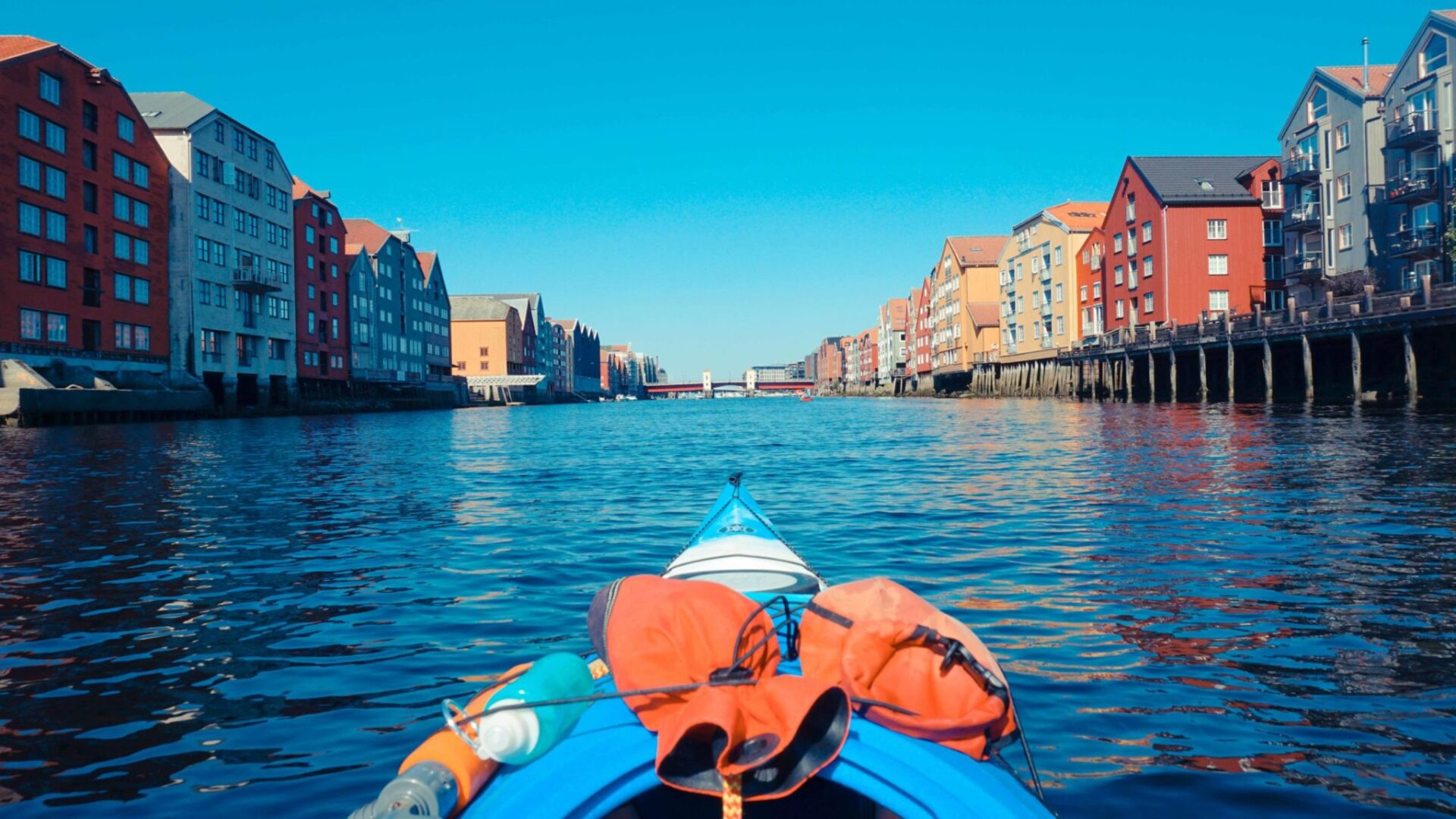
Norway’s Wild Adventureland
Be it adventure sports in Trøndelag or scenic landscapes in Stokkøya—Norway is an experience you won’t ever forget.
This article was originally published in the “National Geographic Traveller India” in November 2019 edition. Check it here.
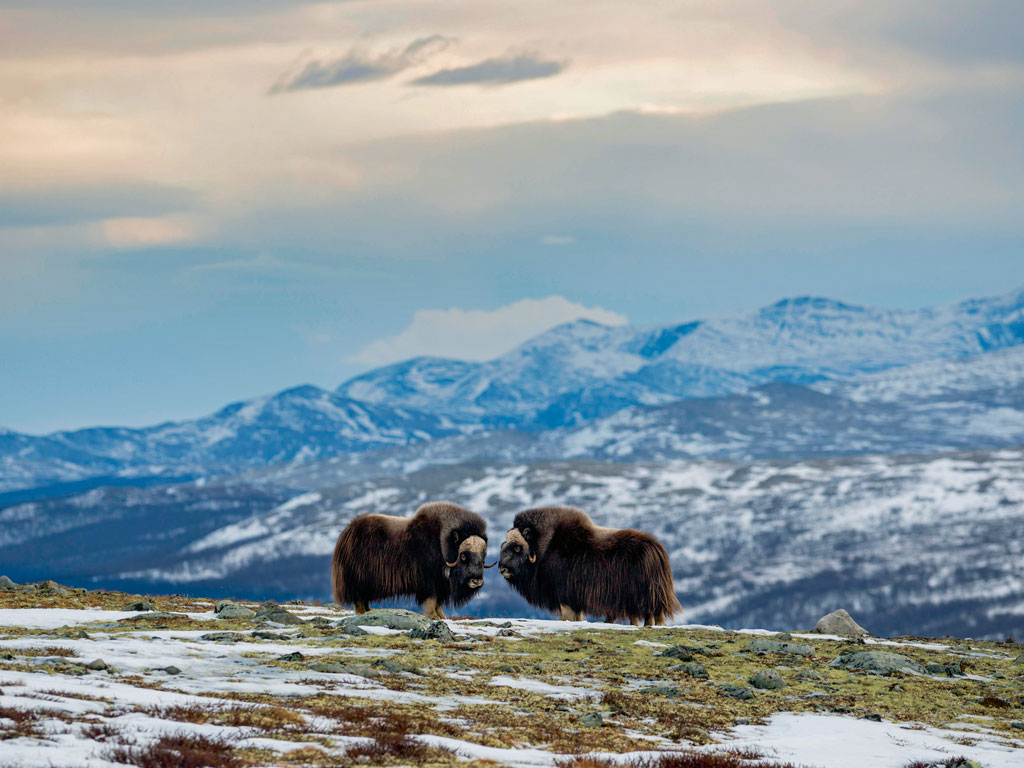

I am crouched down behind a large granite boulder, just out of sight of a giant shaggy creature that looks like a miniature woolly mammoth. The bull musk ox rears its head crowned with narrow fluted horns and stares balefully in my direction, presenting its massive body as a show of strength, covering the herd behind it. These incredible primeval creatures, which hark back to the Ice Age, are in reality very shy and generally pose little threat, as long as you don’t get too close.
I set my eyes upon eight musk oxen, lumbering across the vast barren landscape of the Dovrefjell–Sunndalsfjella National Park, a grand sight considering Norway’s relatively small population. A once endemic species to the country over 1,500 years ago, musk oxen have gradually been reintroduced to the region throughout the 20th century from Greenland. More closely related to sheep than to cattle, they are calm and gentle herbivores but can go on the attack like all wild creatures when threatened, especially when faced with predatory wolves. With no desire to be mowed down by a charging 400 kilogram mass of enraged hair, flesh and muscle, I keep a distance of about 50 metres.
Next to me is my guide, Johan Schønheyder, grand old man of the musk ox safari who first pioneered these ventures 20 years ago. With his broad brim hat and craggy features, now creased in a beatific smile as he gazes upon his beloved musk oxen, he looks every bit the Norwegian version of Indiana Jones. All around me, the barren treeless expanse stretches away to distant horizons of low peaks crowned with ice interspersed with tarns that glitter in the sun, reminding me so much of Ladakh. Johan points out that this 165 square kilometer section of the park used to serve as a bombing run for NATO air forces in Norway called HFK-Sletta. In 2011, the government decided to return it to nature in the largest project of its kind, removing physical structures and unexploded munitions, and replanting the area with sheep grass, willows and quarry plants.
As we settle down for lunch, Johan pulls forth some salty reindeer salami, Dutch edam cheese and a sticky cinnamon bun from his knapsack—all the makings of a fitting Nordic smorgasbord while out on safari. (www.moskussafari.no; tours NOK475/Rs3,750 per person for a group safari, NOK 4675/Rs36,900 per guide per day for a private safari.)
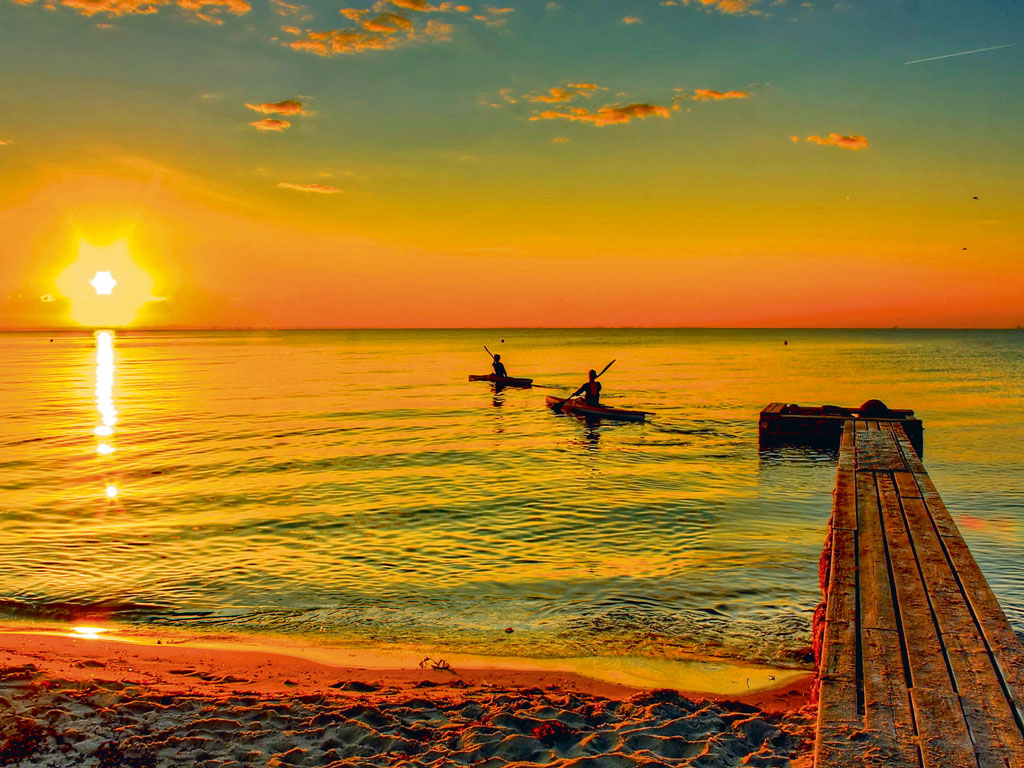

Driving in Oppdal
The next morning, I drive to the rafting centre operated by Opplev Oppdal and am met by one of the proprietors, Andreas Wenk, a slight young man with a charming manner and a penchant for Oppdal’s many outdoor activities—climbing, cycling, kayaking, rafting and skiing—all less than a 20-minute drive away. He directs me down to the edge of the river Driva, where I clamber into a yellow raft along with a Norwegian family of five, and immediately notice that the rafts are smaller and more cramped than the ones I am used to in India.
After some basic instructions from our South African guide, Tammy, we are off down the river, which is shallow but clear and fast-running. The 14 kilometre section of the river that we raft through has several exciting moves through narrow rock channels and some memorable Grade 3+ rapids like Bruhølen (which translates to bridge-hole), Ålma drop and Shark’s Mouth. At the halfway point we disembark and Tammy challenges us to jump off an overhanging ledge that projects 5 metres out above the river, and veteran of the world’s highest bridge bungee that I am, I don’t hesitate for a second!
In the afternoon, Andreas guides me through the eight zip lines that range from 50 to 140 metres in length and up to 40 metres above the water. The zip lines have self-braking devices that remove a degree of difficulty from the adventure, but the flip side is you end up spinning around and being dragged in on your butt! We zip back and forth across the glittering Driva in the thickly forested canyon like giant dragonflies with the rafters and trekkers far below in some parallel universe. On the last line I persuade Andreas to let me go first and manage my first respectable landing. I realise that no matter how often you do it, ziplining is always an awesome adrenalin rush. In Andrea’s words, here in Trøndelag you will find the Norway that people don’t necessarily read about in magazines but are delighted to discover when they arrive. (opplevoppdal.no; 350 NOK/Rs2,750 per person for zipline park; 840 NOK/Rs6,600 per person for rafting normal tour; 440 NOK/Rs3,500 per person for rafting family tour).
Stuck in Trondheim
If Trøndelag is the wild heart of Norway, then Trondheim is its beating hub, with excellent access to all kinds of outdoor activities within a short driving distance. Norway’s first capital, and now its third largest city, it is a great place for a pit stop in between my adventures with much to eat, do and see. My host, Karin Fuglem, from the Trøndelag Tourist Board, takes me to dinner in the trendy Solsiden quarter to a buzzing restaurant Nordøst, known for its delicious Asian-Norwegian fusion cuisine. We feast on oysters in a spicy coriander dressing, steamed dumplings with sea crab and curry, as well as mango sorbet and steam buns filled with matcha cream for dessert. The next morning, I look out from my room at the swish Hotel Scandic Bakklandet along the shining stretch of the Nidelva, the river neatly sandwiched between two rows of colourful clapperboard stilt houses. Later that day, I find myself gazing up at that same window from the river as I glide by in a red two-man kayak.
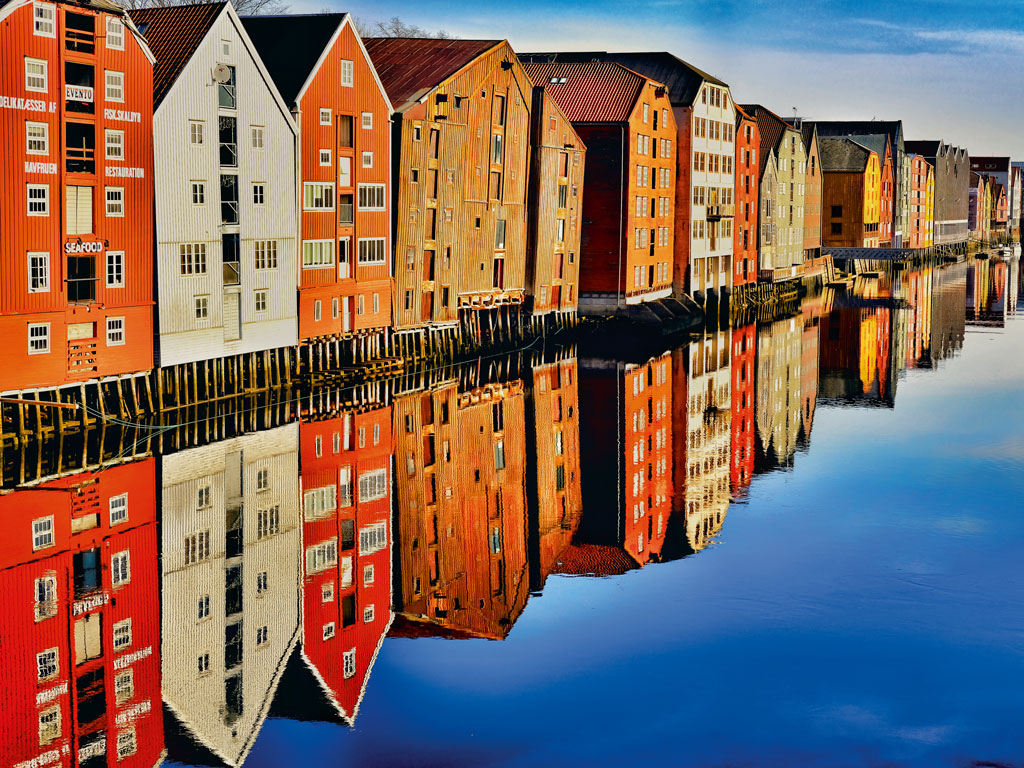

Two hours earlier, Karin and I had slid our craft into the Nidelva at the Tempe football field about eight kilometres upriver, at the edge of town. The first part of the trip is uneventful as we paddle past scenic grassy fields and forests dotted with looming church spires. But soon we are in trouble; the unusually hot summer has made the river so shallow that we ground ourselves on the riverbed. Our young guide, Elin, anxiously buzzes around in her kayak but can’t really help much. Finally, I’m rescued by Karin who jumps out of her front paddle seat and drags us to deeper water. Still, kayaking is a wonderful way to see Trondheim and experience the transition from peaceful nature to busy city life. I would, however, recommend checking the water levels before going on the river during the hot summer months. (trondheimkajakk.no; one to four people 400 NOK/Rs3,150 per person, five plus people 350 NOK/Rs2,750 per person. Optional, dry-suit rental 100 NOK/Rs800.)


The Road to Valhalla
Ever since I arrived in Trøndelag, people had been telling me about the island of Stokkøya, some kind of mythical Valhalla that had to be visited. So it was with eager anticipation that I drove out of Trondheim into the setting sun headed for the coast. I marvelled at the giant expanse of Trondheim fjord, and even more at the massive car ferry that swallowed up my rental and me (along with over a hundred other cars) and disgorged us efficiently and swiftly on the other side in precisely 25 minutes. Continuing on the winding road to Stokkøya was incredibly scenic—at every bend and turn appeared a glittering lake with thick conifers lining its shores. The waters merged, the vista broadened, and I reached my journey’s end at a perfect crescent beach forming a small bay with its waters as flat as table glass.
The Stokkøya Strand Hotel occupies a prime position set back slightly from the shoreline, where I am warmly greeted by the charming couple, Roar Svenning and Torild Langklopp, who run the place. The three of us sit down at the best beachside table in their Strand Baren restaurant to a magnificent seafood meal of blue mussels steamed in coconut milk and freshly caught halibut in white wine sauce. Over the course of dinner I learn that Roar is a man with a deep connection to the sea, having been a fisherman, diver and fish exporter in his previous professional avatars. As the sun sinks into the sea, we finish up the fare with strawberries (from the neighbouring island of Linesøya) and chocolate ganache. Torild explains that the hotel rooms and cottages can accommodate up to 120 guests, and people can also pitch tents on the premises for a small fee. Roar talks passionately about his ambitious plans to develop Stokkøya into a modern village based on sustainable architecture, renewable energy and organic farming and fishing, a platform designed to attract entrepreneurs and professionals with needed skills back to the countryside.
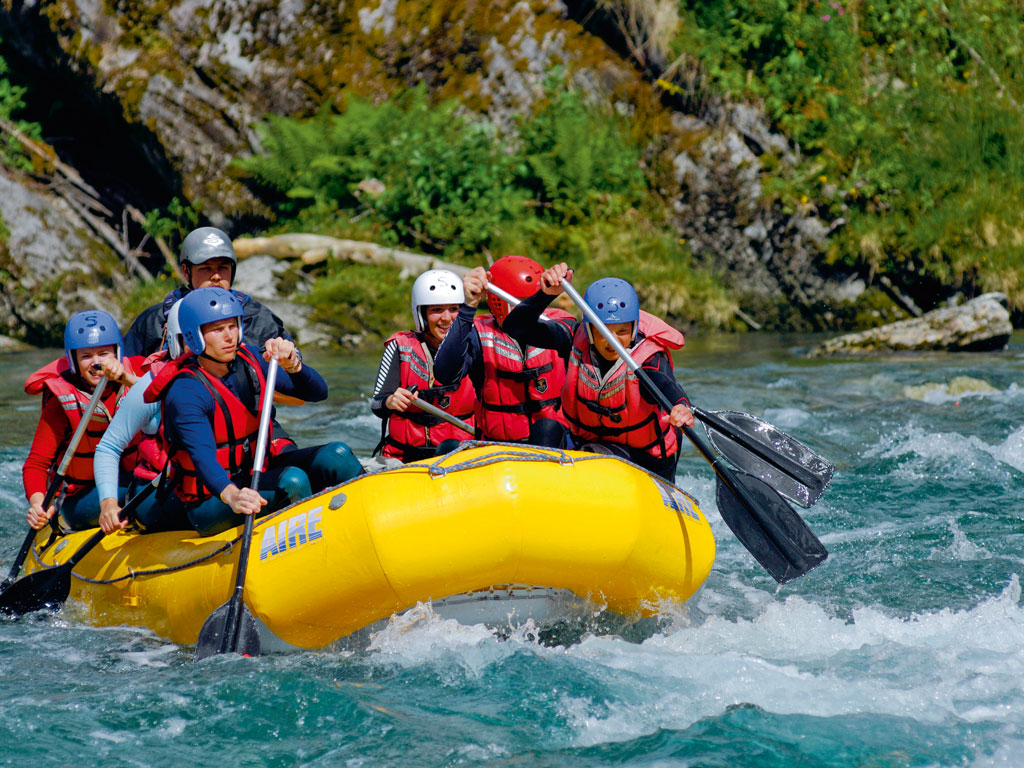

The next morning, I am introduced to my new kayaking guide, Sturla Gabrielsen, a grizzled veteran of sea kayaking and a man of few words. We lug the yellow kayak to the water’s edge and I push off into the flat bay. A few wobbly strokes and Sturla instructs me to lower the fin, which immediately stabilises the craft. Now I am feeling much more comfortable and we strike out along the shoreline, soon slicing through the green waters on a perfect summer’s day. Leaning over the side, I can see clearly through to the seabed. The kayak skims over thick strands of kelp and seaweed that reach up towards us like ghostly fingers in a dream. We are all alone on the sparkling water. I wonder what Viking ancestors Sturla is a descendent of as his sturdy arms effortlessly propel his craft forward. We round a few small islands and come back on the more choppy seaward side.


It turns out that Sturla, like many of the Norwegians I have met, is a man with multiple strings to his bow. Starting out as a wandering salesman of imaging devices, he wearied of the daily grind and returned to his native Stokkøya in 2006. Back home he switched sails and in addition to providing hiking and kayaking guide services he partly owns and single-handedly manages a small microbrewery, Stokkøy Bryggeri, which annually produces 15,000 litres of craft beer. He gives me a quick tour of the facilities and several product samples, which I savour later in my trip. In particular, his Belgian-style Wit beer hits the spot with its delicate, floral aromas that I find to be light and refreshing.
A final glorious lunch at StrandBaren of shore crab soup with truffle seaweed, scallop in cauliflower sauce served in its shell, and crab claws with black pepper sauce, and I am very reluctantly on my way, leaving Valhalla behind. (stokkoya.no; NOK 490/Rs3,850 daily rate, with hourly and half-day rates also available; guide and instruction NOK 500/Rs3,950 per hour with advanced notice of three hours; doubles from NOK 1,700/Rs13,500 during the summer.)
A Family Adventure
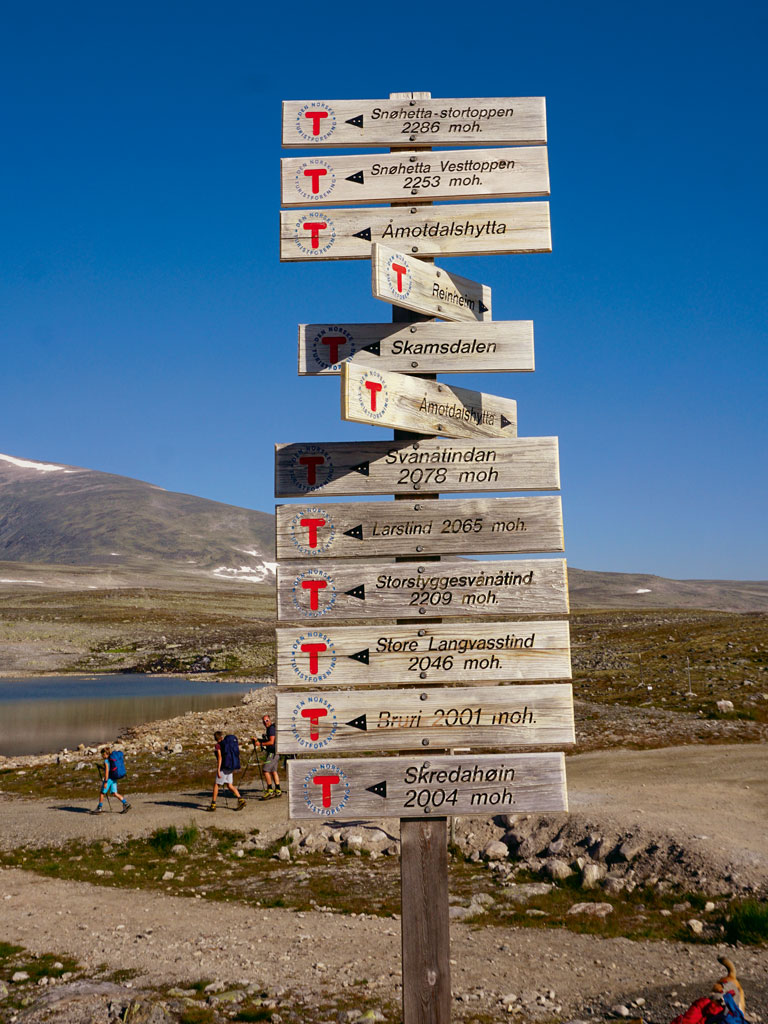

The last stop on this journey through Trøndelag is Ryppetoppen (which translates to grouse mountain), an adventure park located 90 minutes due east of Trondheim and right on the border with Sweden. I drive in at about 10 p.m. in the gathering Norwegian dusk and am greeted by the founder, Stig Aasgård, a poster boy for Scandinavian athleticism. With his deep blue eyes, blonde hair and intense gaze, the resemblance to a young Steve McQueen is complete. He treats me to a marvellous dinner of fresh grouse and smoked salmon, all of which he has caught and skinned himself. Completing the authenticity of the outdoor experience, I am staying in a wooden log cabin outfitted with all the modern amenities one could hope for, such as, a fully equipped kitchen, WiFi, hot water shower, HD television and an outdoor BBQ. The next morning, I see that we are surrounded by a forest of birch trees, the rushing wind rustling their leaves into song. I hum the twangy guitar riff of one of my favourite Beatles tunes, wishing I could turn to a fellow fan and say, “this Norwegian wood is undeniably good!” Everybody needs a dad joke once in a while.
Stig walks me through his climbing park, which has 22 different high ropes with varying degrees of difficulty and 27 zip lines ranging from 30 to 320 metres in length. Having been an outdoor adventurer all his life, I am not surprised by Stig’s passion and commitment to bring Norwegians back to nature with this maiden enterprise of his. He does not charge people to use the trekking paths or outdoor facilities like grills and trestle tables, only for the high ropes courses and canoe and paddleboard rentals. We see platoons of visitors, young and old, being kitted out in helmets and harnesses and trained for the climbing courses. There is something here for everyone whether you are four or 40. It is quite delightful to see little toddlers who are barely able to walk, crawling through suspended barrels and straddling wooden planks with the supreme confidence and fearlessness of the very young.
To end our tour of Rypetoppen, Stig (his full name translates as one who finds the path to the Gods) leads me on a trail through the thick conifers, which go up and over a sheer rock face and down to the beautiful Brudesløret waterfall. In this large natural rocky enclosure I gaze up at the day-trippers. They look even more like dragonflies from this angle as they flit across ziplines, strung out high above waters sparkling with foam. I am childishly excited to pose next to a yellow wooden sign in the middle of the forest that marks the international frontier, with one foot in Norway and the other in Sweden, and not a border guard in sight. (rypetoppen.no)
![]()
![]()

